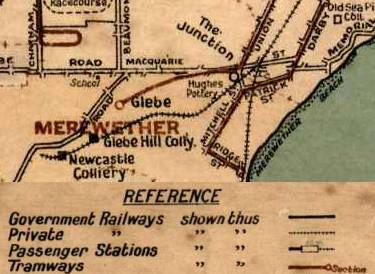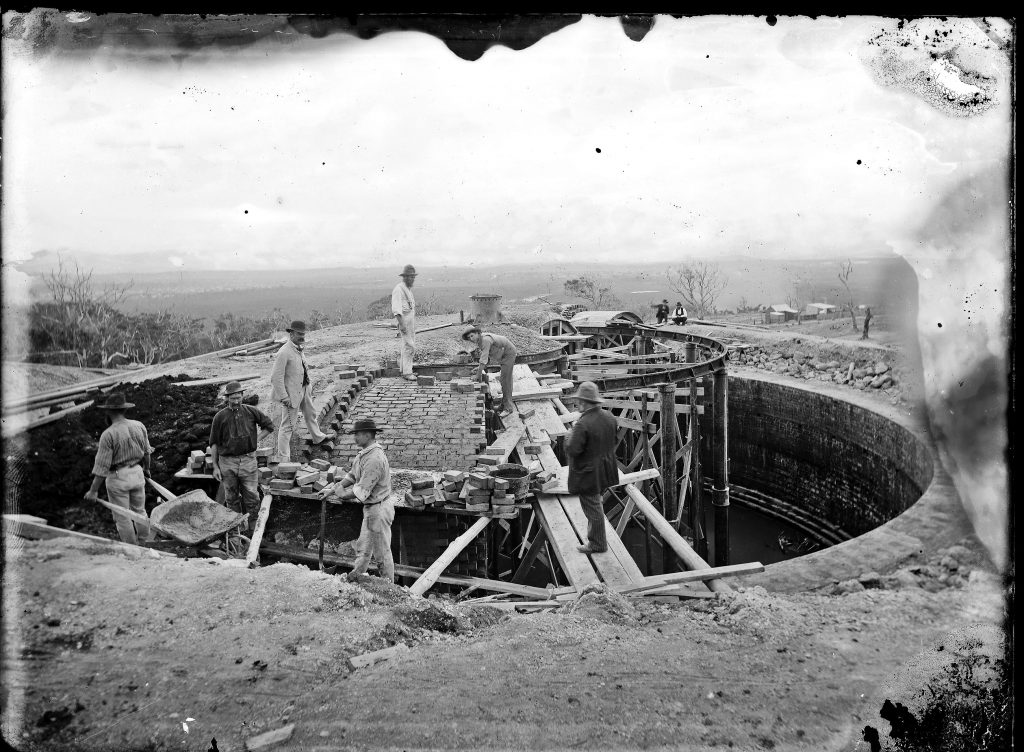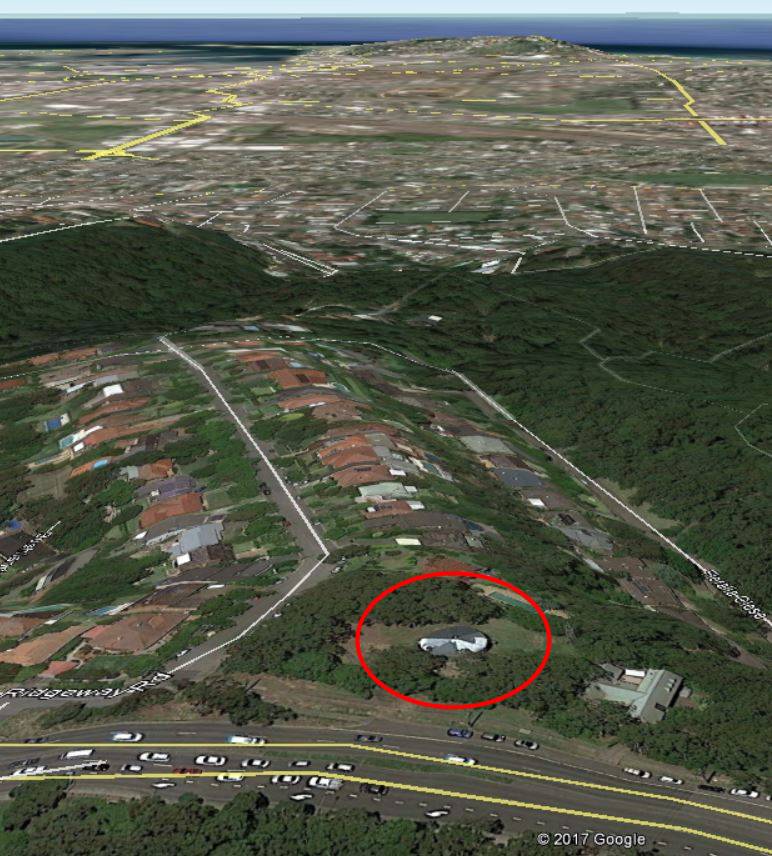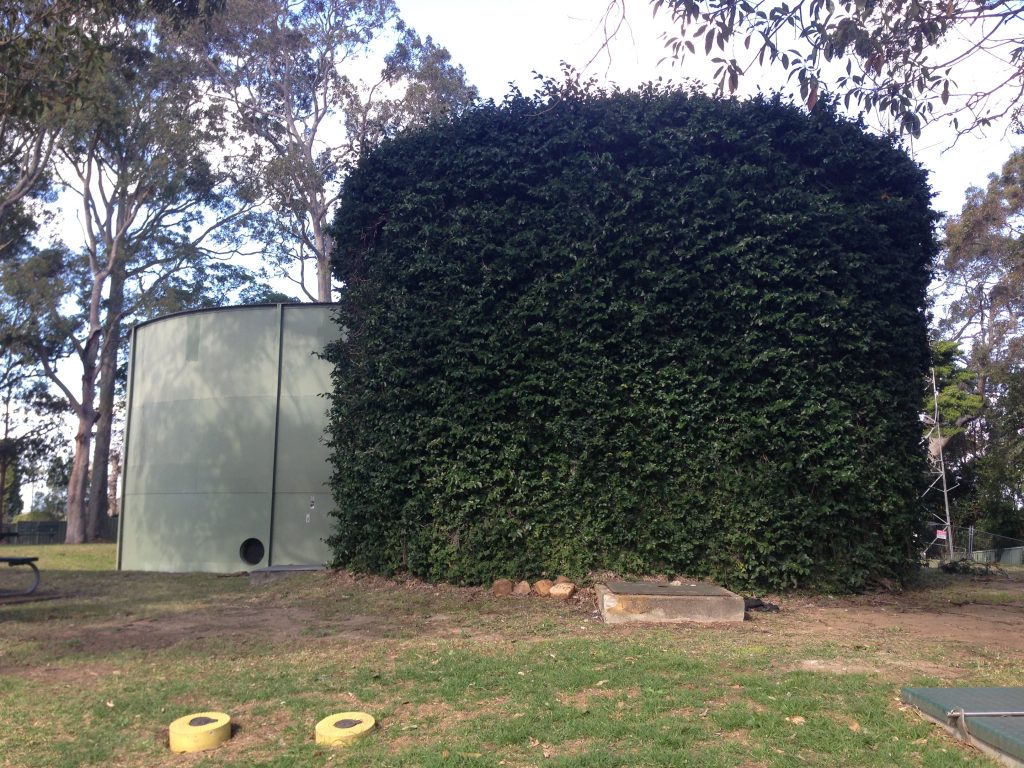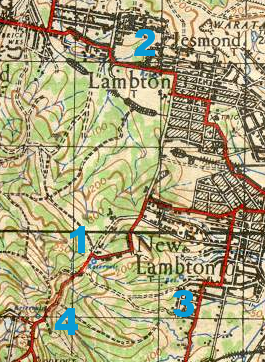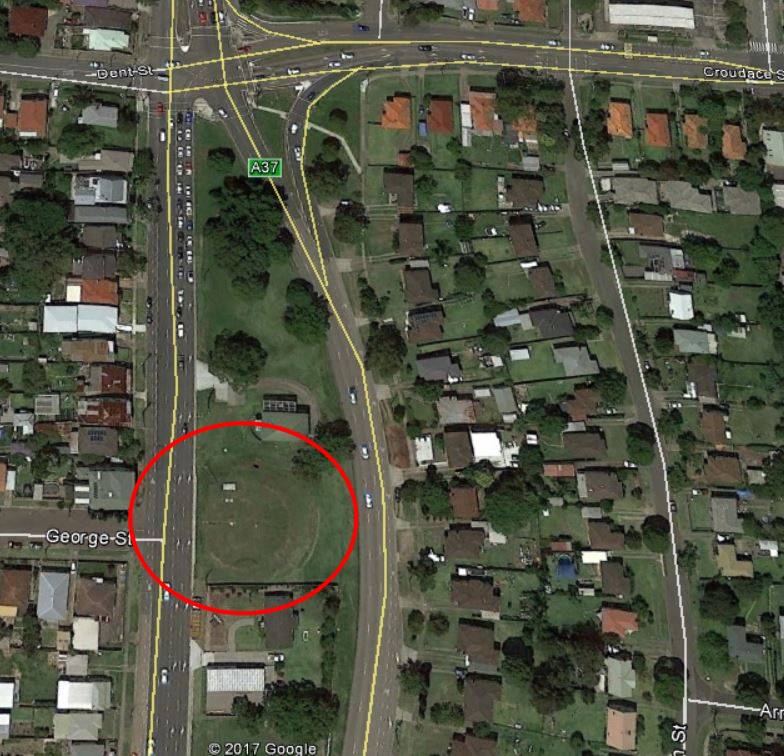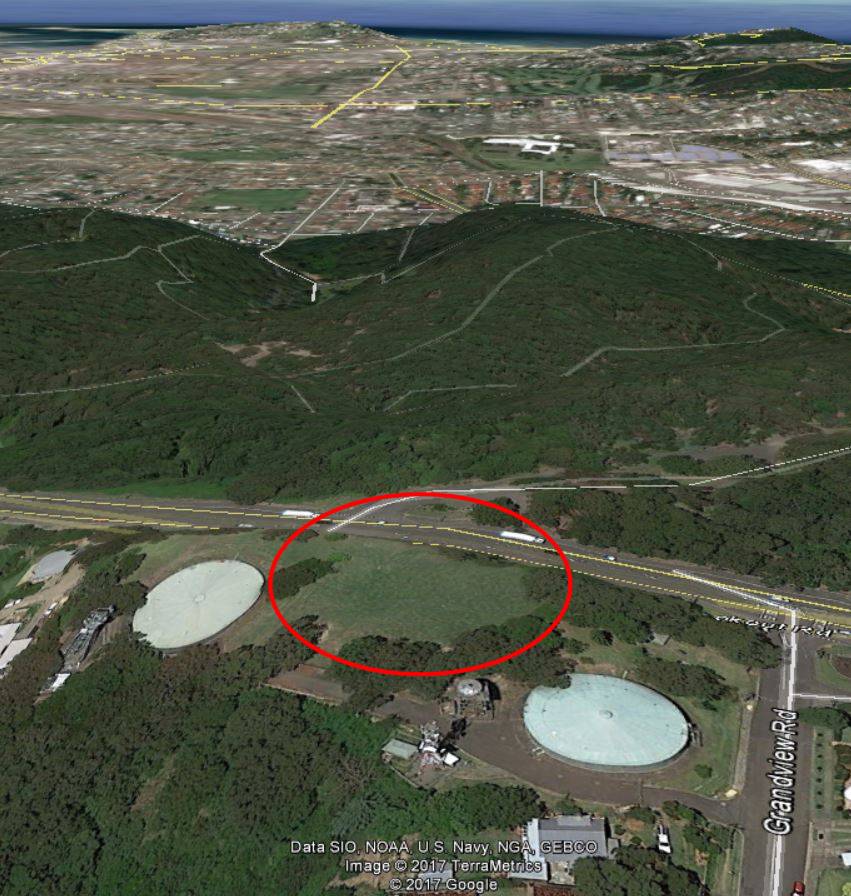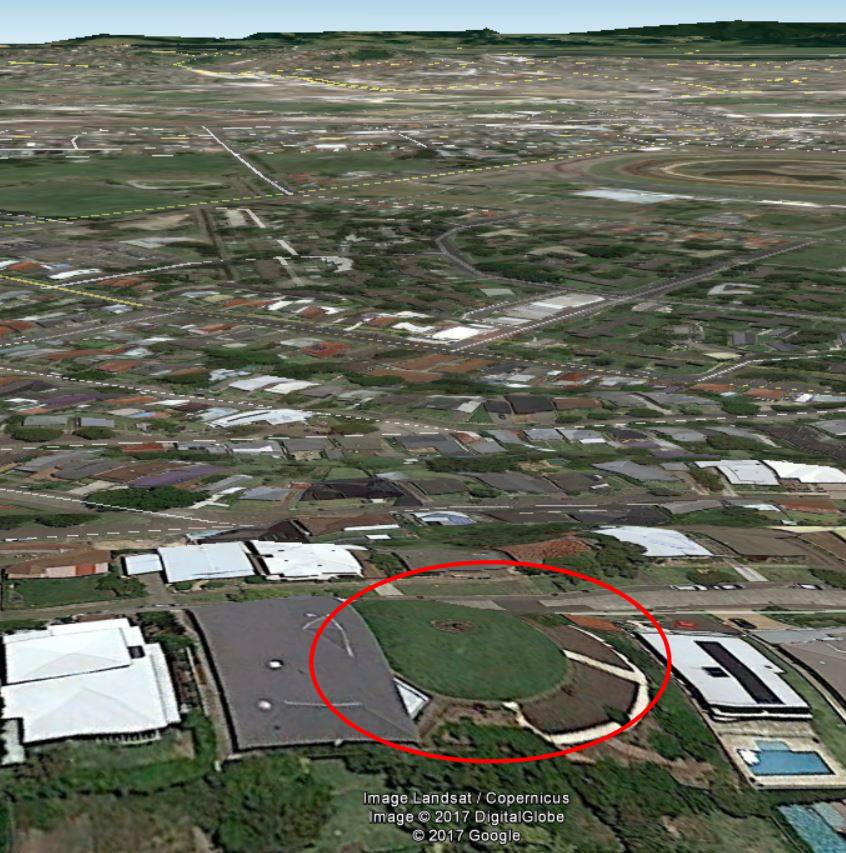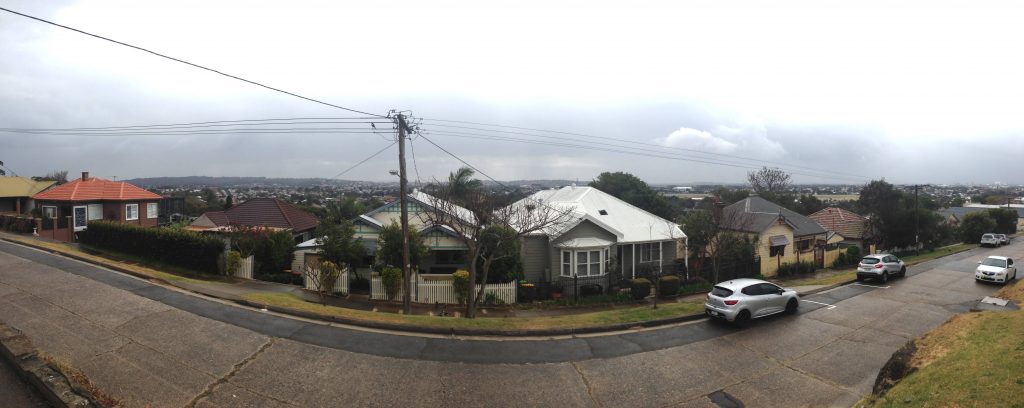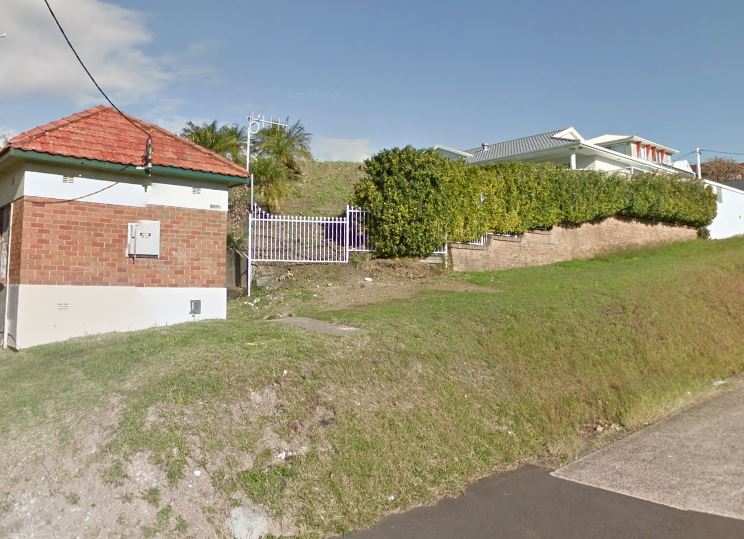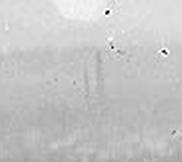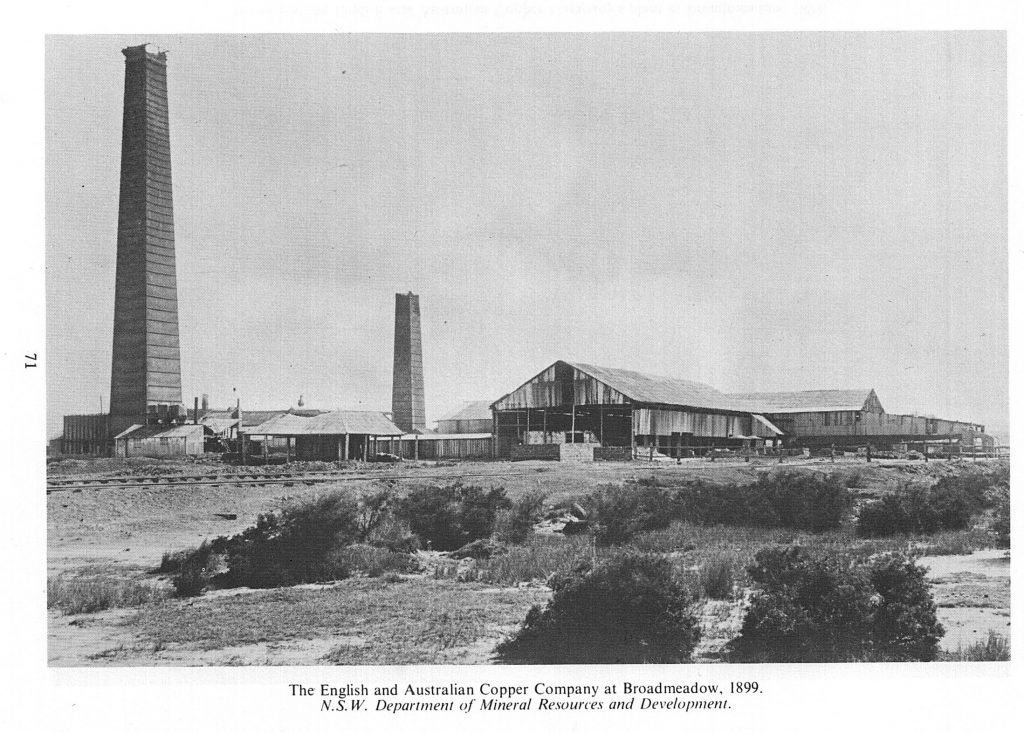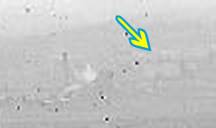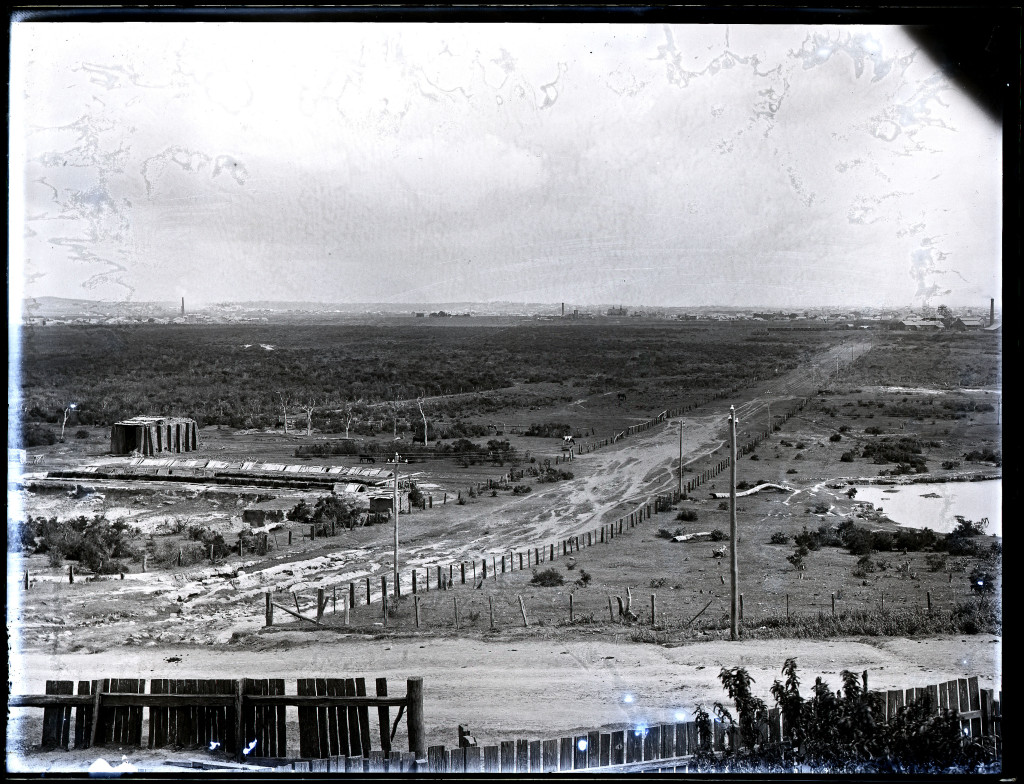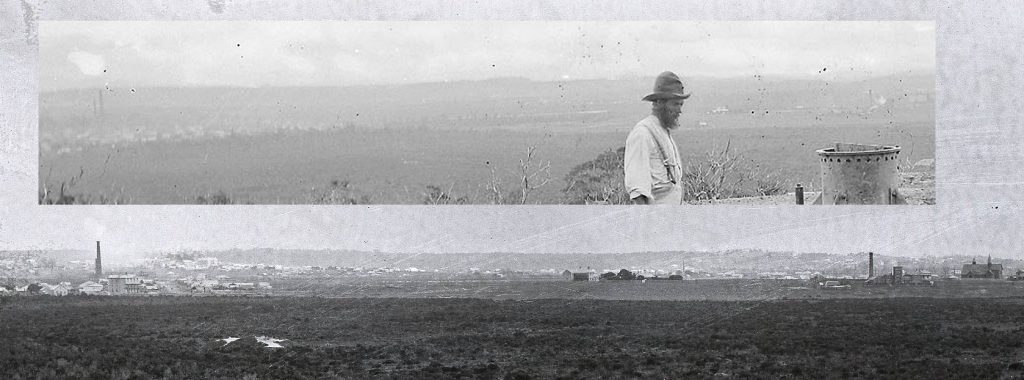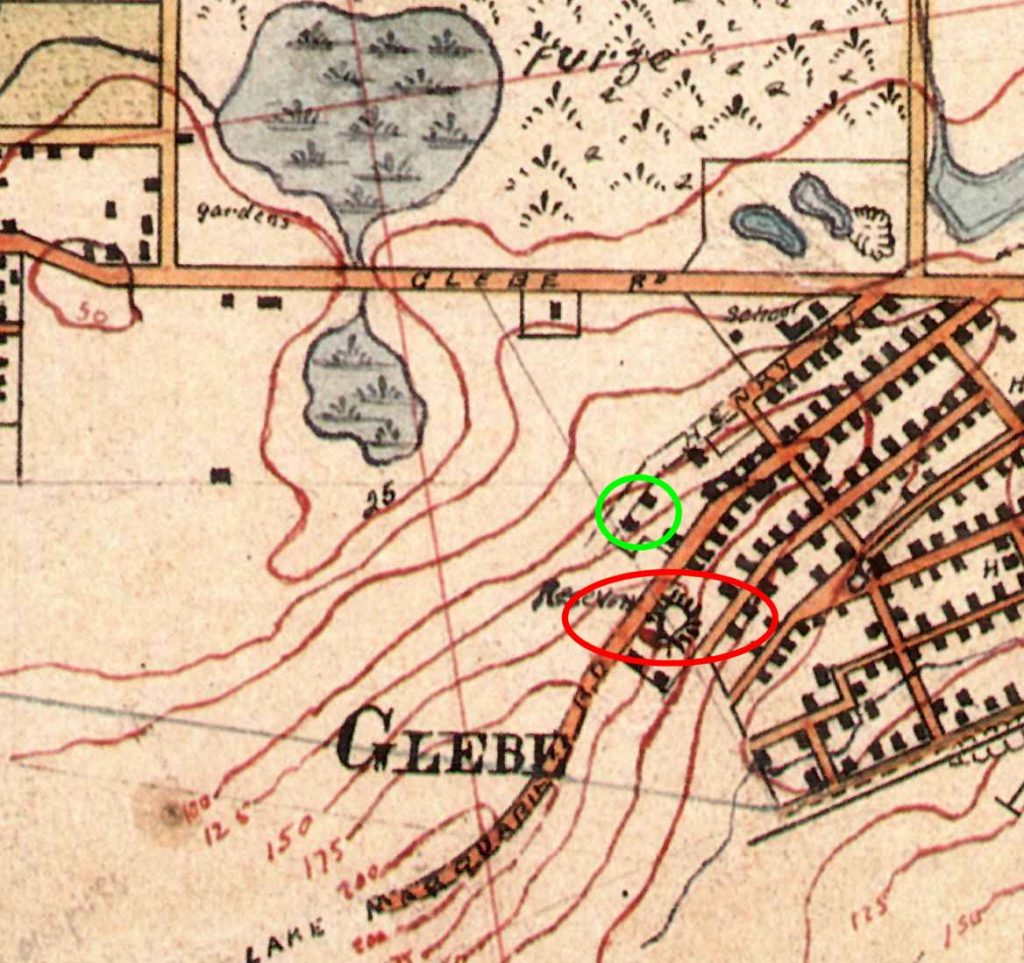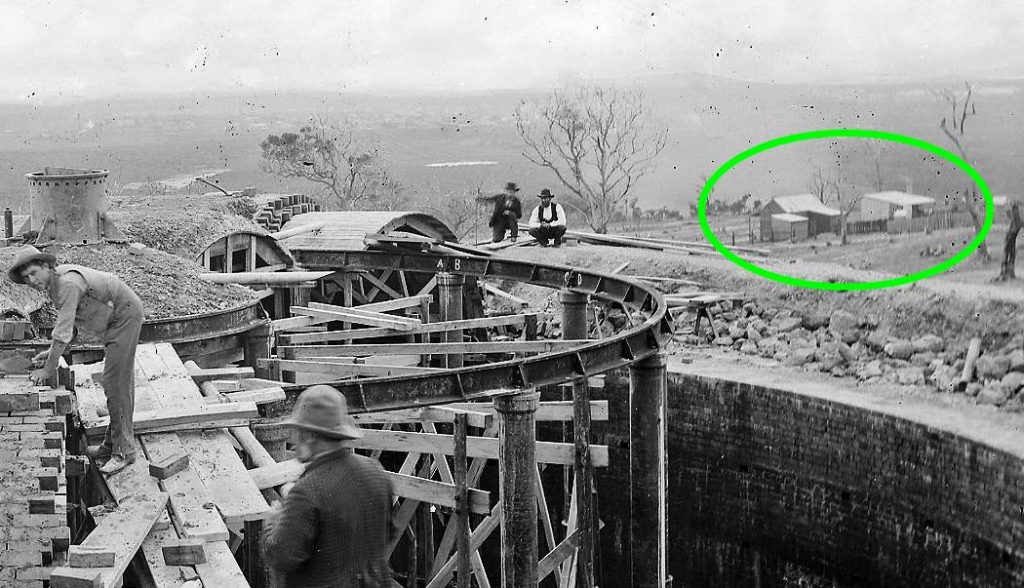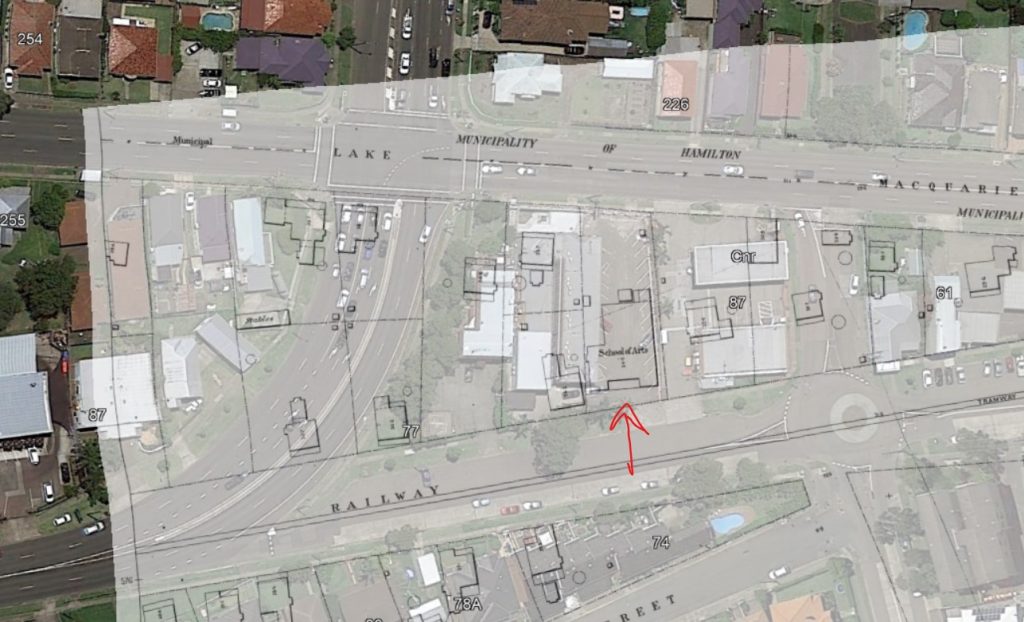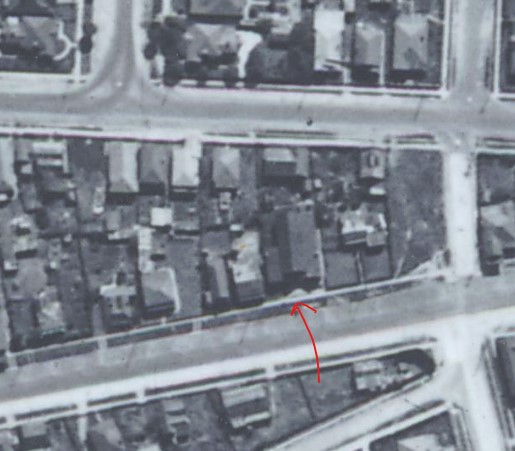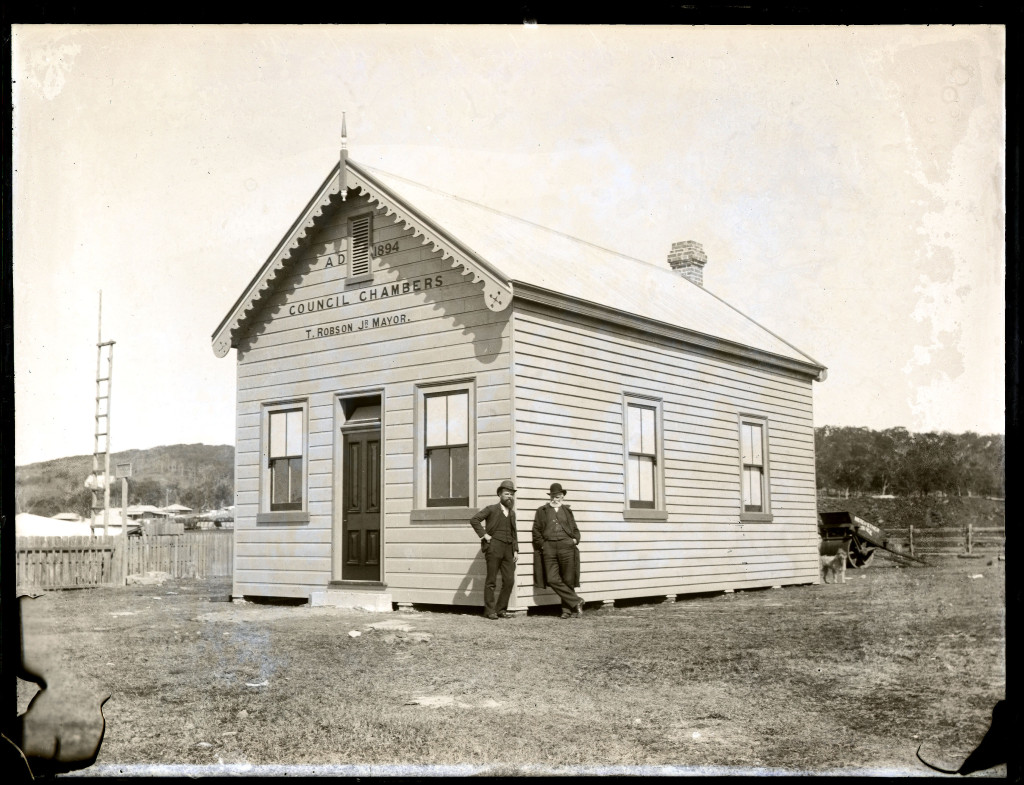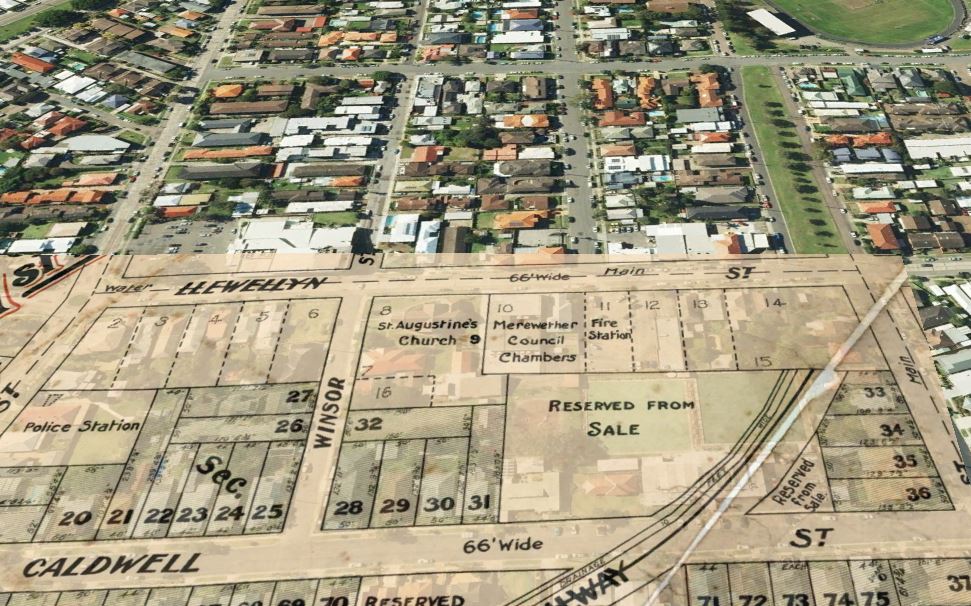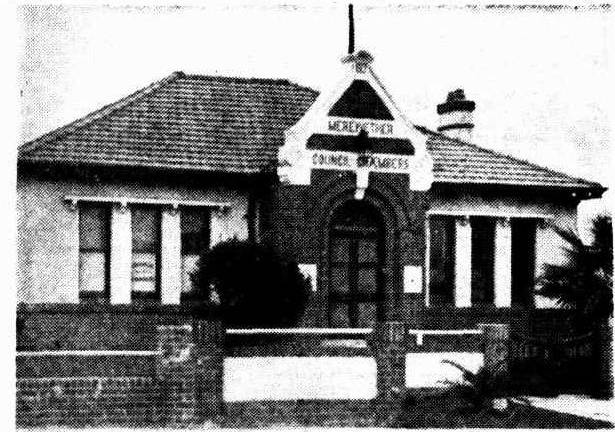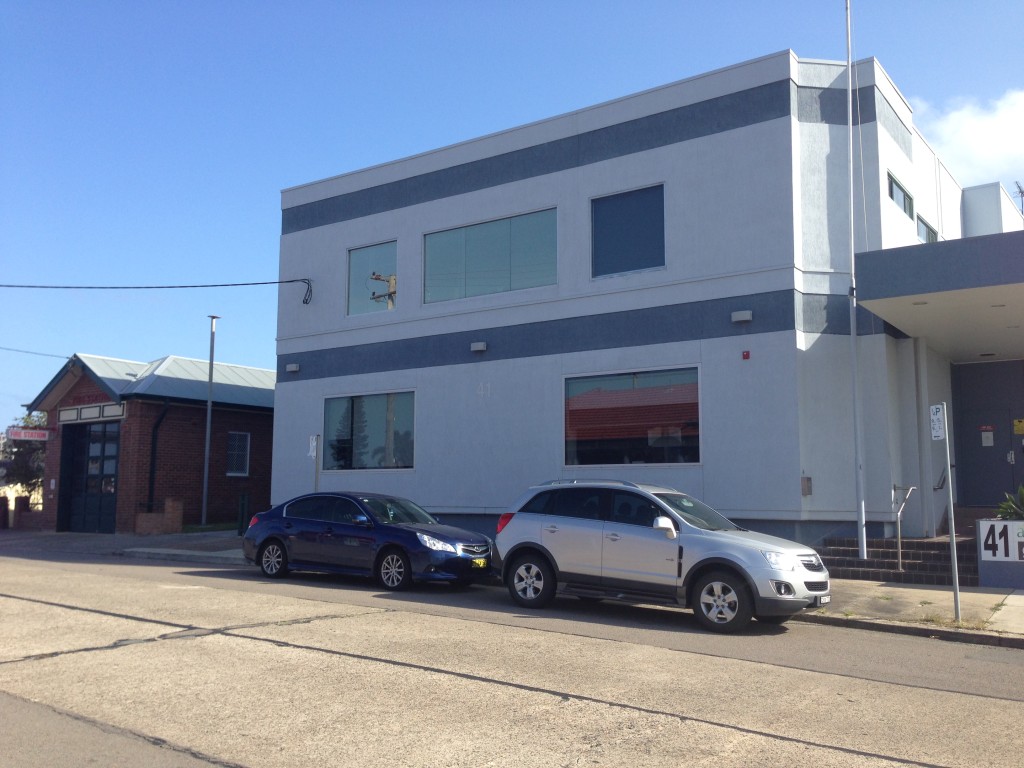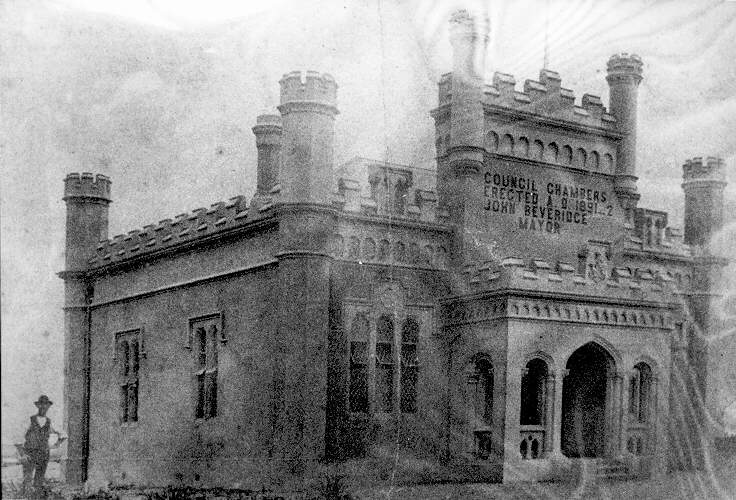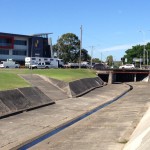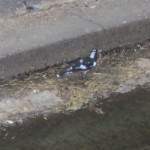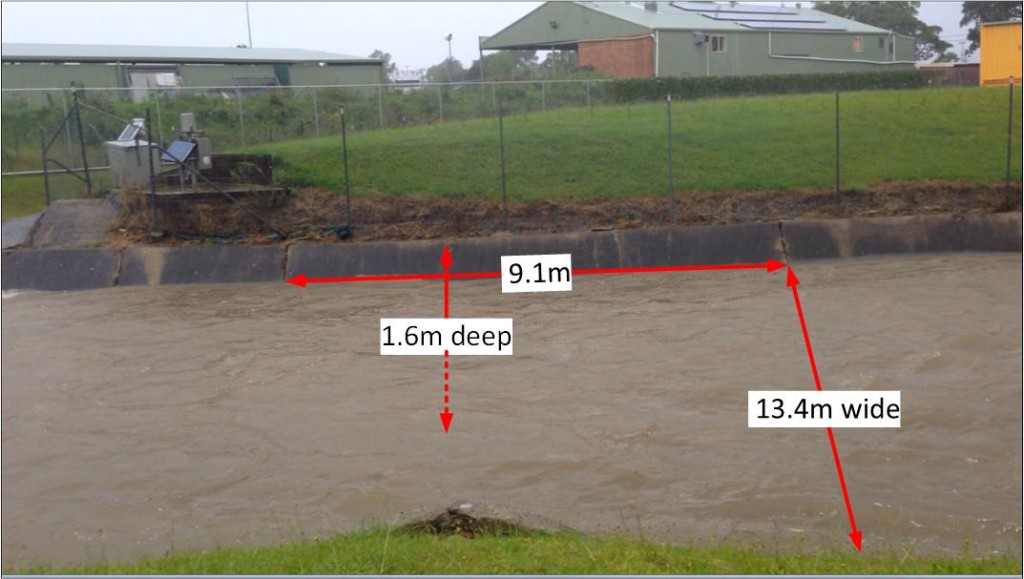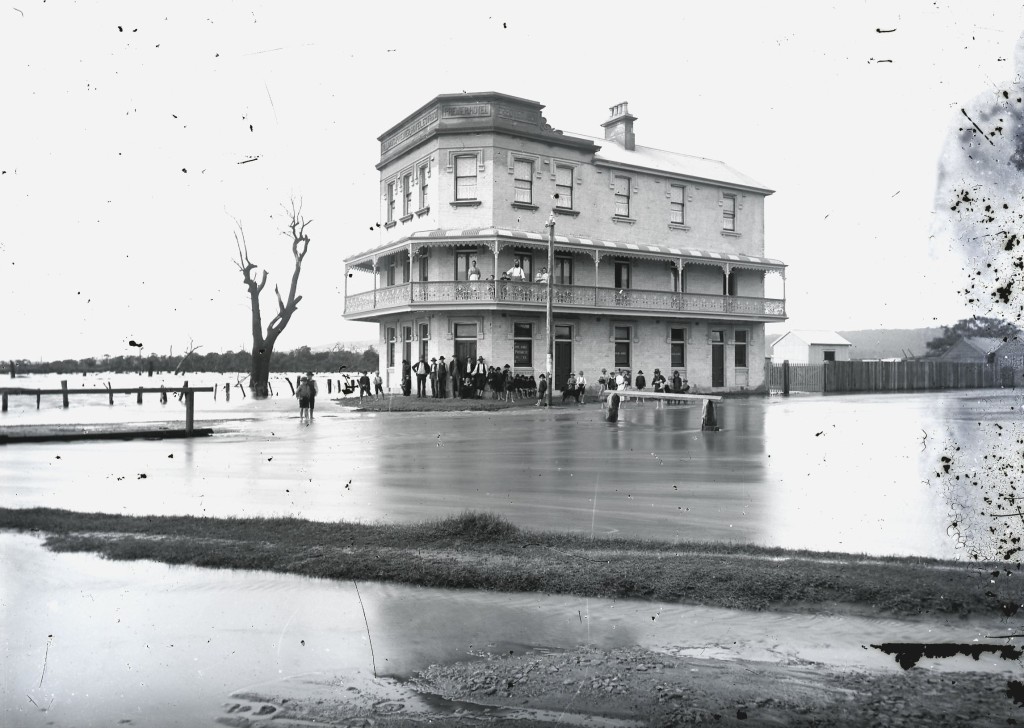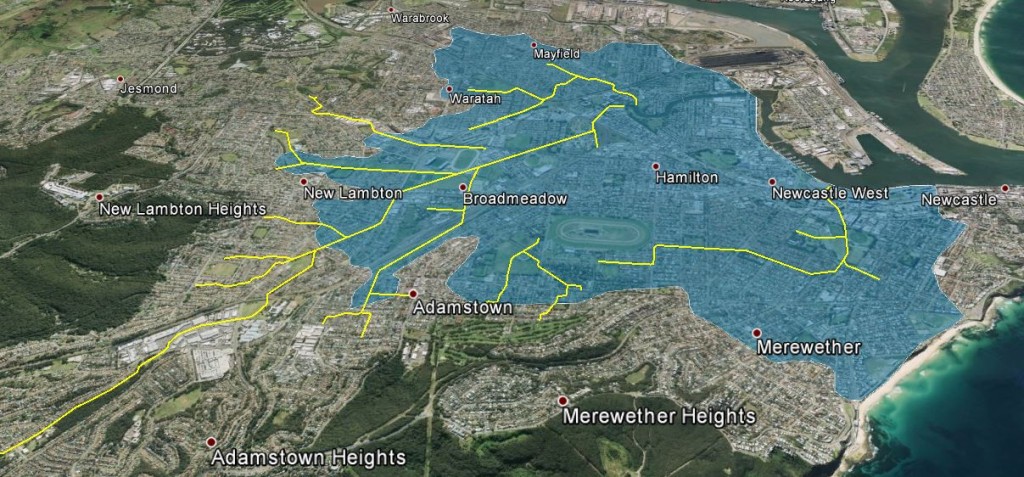Prior to Federation in 1901, each Australian state was responsible for its own military defence. In NSW, volunteer forces were formed and trained in various localities, and they held annual encampments where multiple units gathered for extended training and drills.
In 1897 a camp was held in the flat area of Hamilton South known as Blackburn’s Oval. This was located near the Merewether Hotel (now the Mary Ellen) operated by Edward Blackburn. Over 60 tents were erected to accommodate 550 men, comprising the 4th Infantry Regiment from Newcastle, a field artillery unit from Sydney, and the mounted No. 3 Lancers Squadron from Singleton and Maitland. The Newcastle Morning Herald and Miners’ Advocate reported that “the four days’ military encampment commenced on Friday night under most unfavourable weather auspices, a strong southerly gale, with pouring rain, rendering the condition of the men under canvas far from pleasant.”
Each day was filled with drills and parades, with the main exercise held on Monday. Woken at 3:30am, the troops formed up on the parade ground and were told of an ‘enemy’ force having landed at Belmont and heading to Newcastle. The infantry, cavalry and artillery proceeded to Charlestown and engaged in a 90-minute mock battle that repulsed the ‘invaders’ in time for breakfast at 8.30am.
Returning to camp and a few hours rest, the soldiers held another exercise in the afternoon. Upwards of 7000 spectators crowded onto the Glebe Hill and the spoil heap of the old Hamilton colliery to watch “the troops rushing to and fro, the cavalry galloping around, with the air thick with smoke as the big guns reverberated.”
The camp ended on Tuesday with general satisfaction at its success, apart from the departing troops’ complaints of “insufficient and commonplace” food rations. Newcastle continued to host annual military encampments in the vicinity, with the last held in September 1914. Blackburn’s Oval was used for sport up until 1923, after which the area was developed for housing.
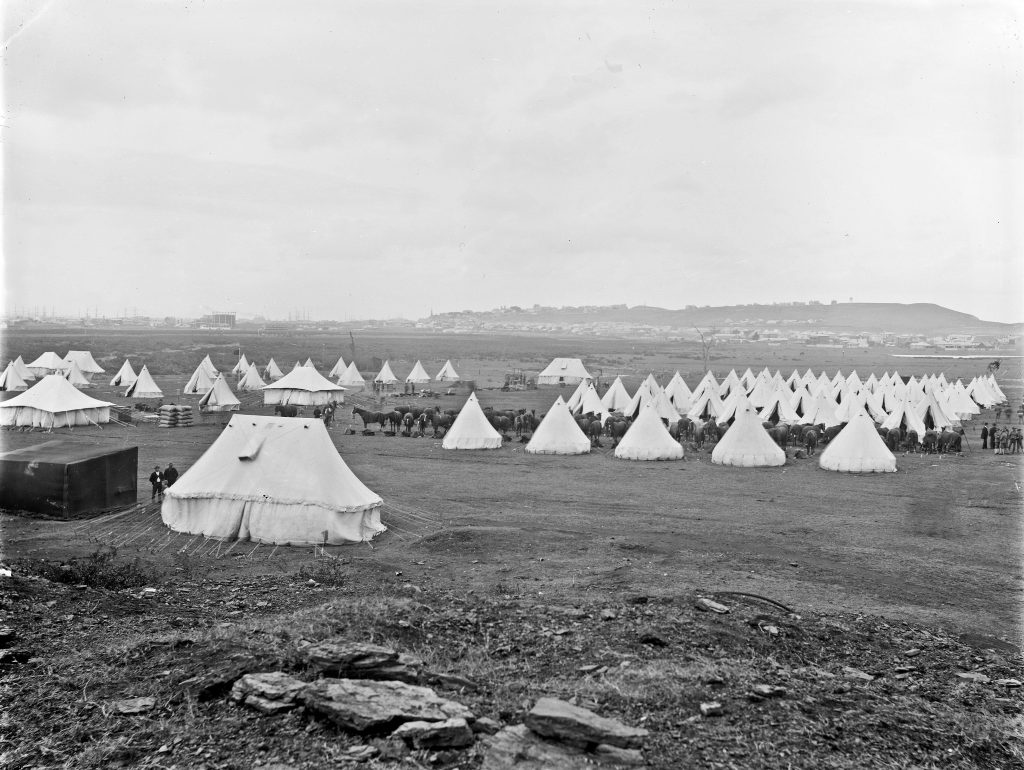
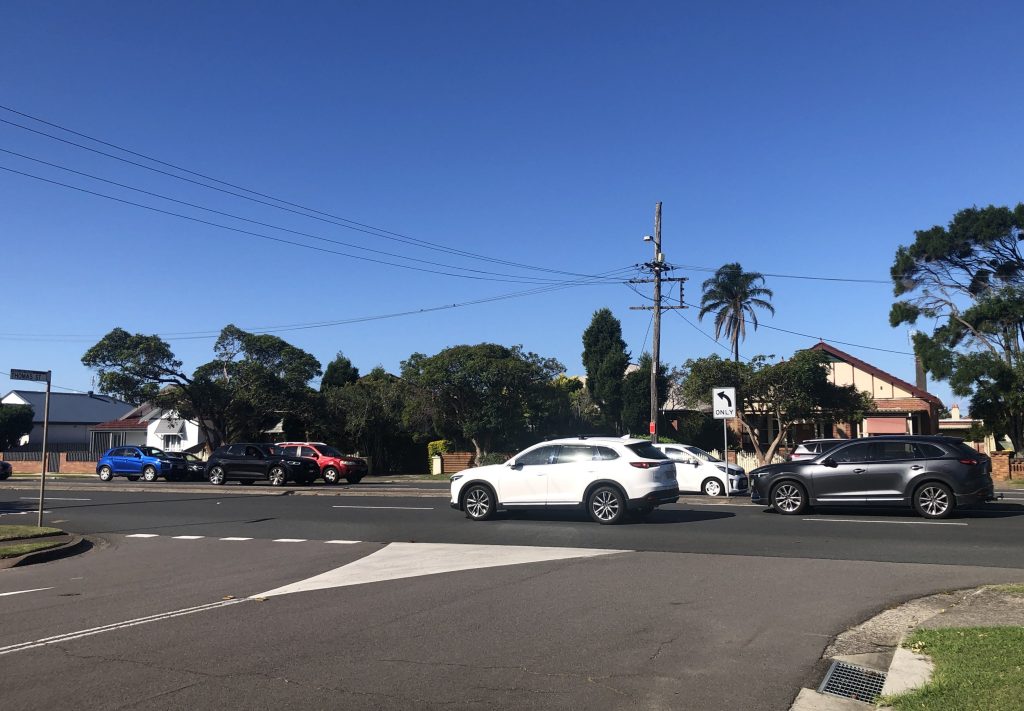
The article above was first published in the May 2024 edition of The Local.
Additional Photos
Newcastle Libraries Hunter Photobank has a number of photos of army encampments held in the inner city area. The photograph below is undated in their collection, but it is almost certainly the encampment of 1897.
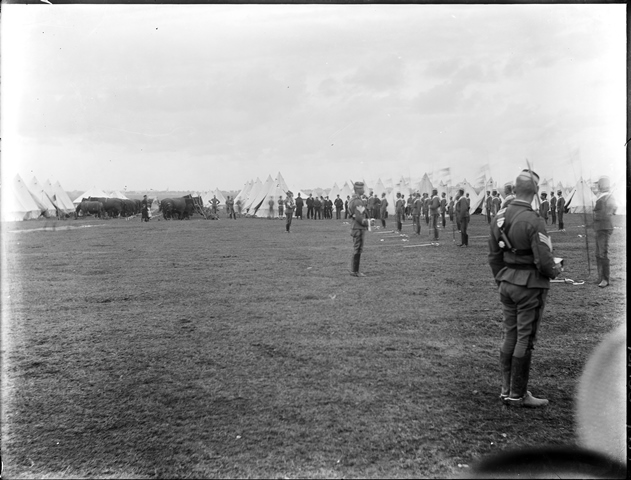
The collection has one photograph of an earlier encampment held in 1895 …

… and multiple photographs of the encampment held on the old racecourse in April 1903.
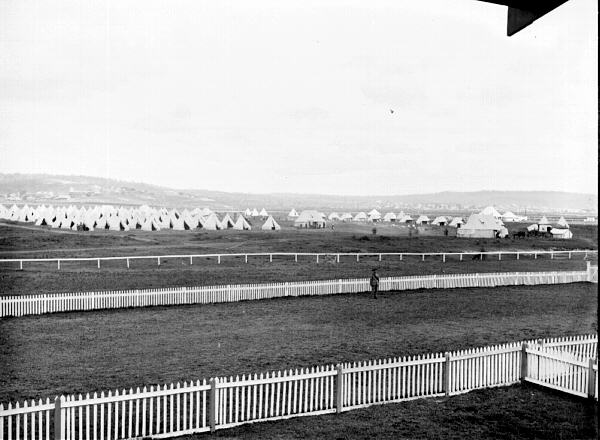
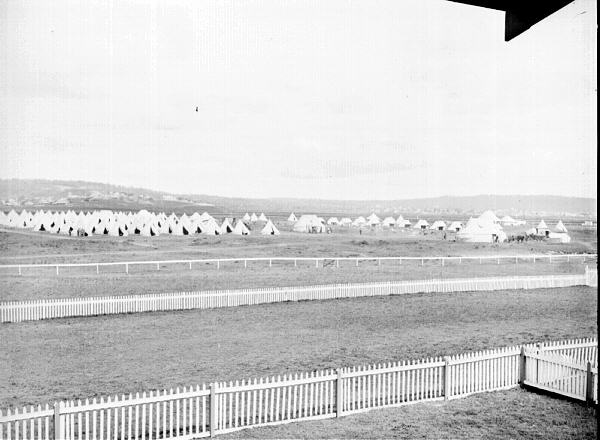
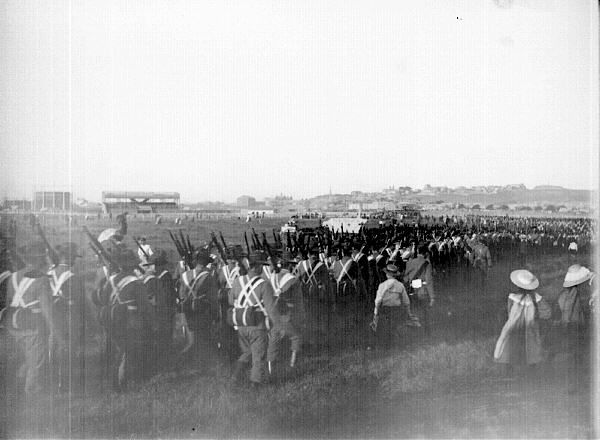
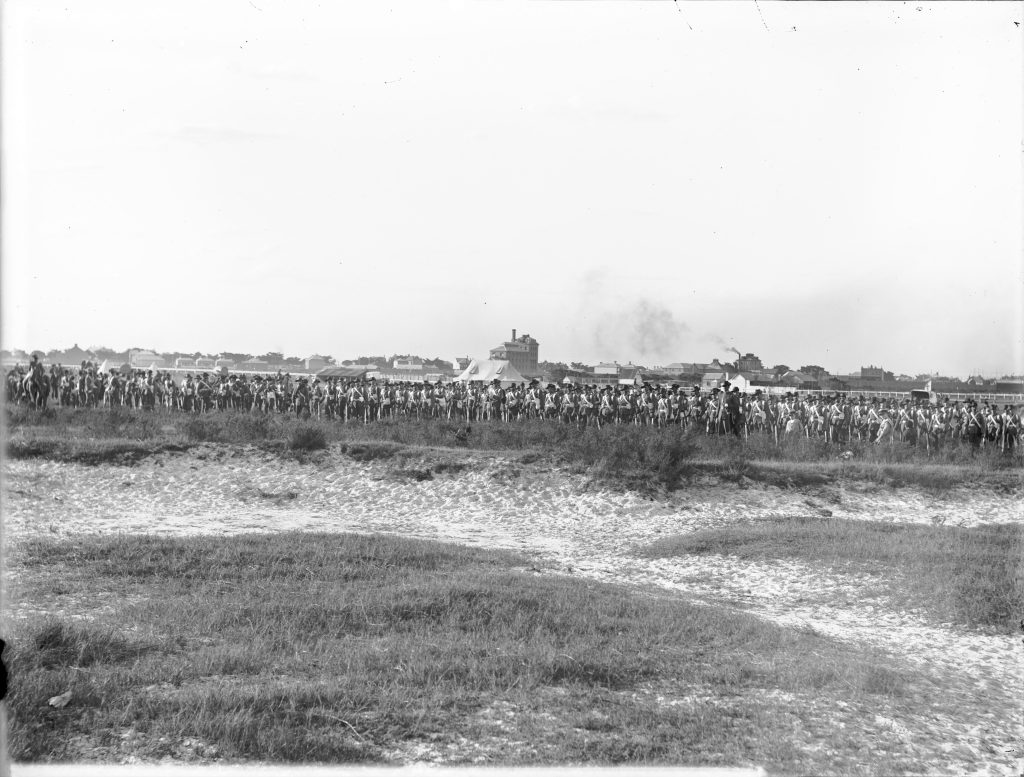
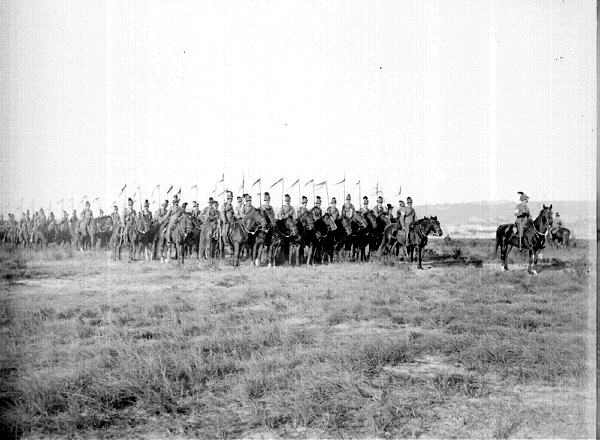
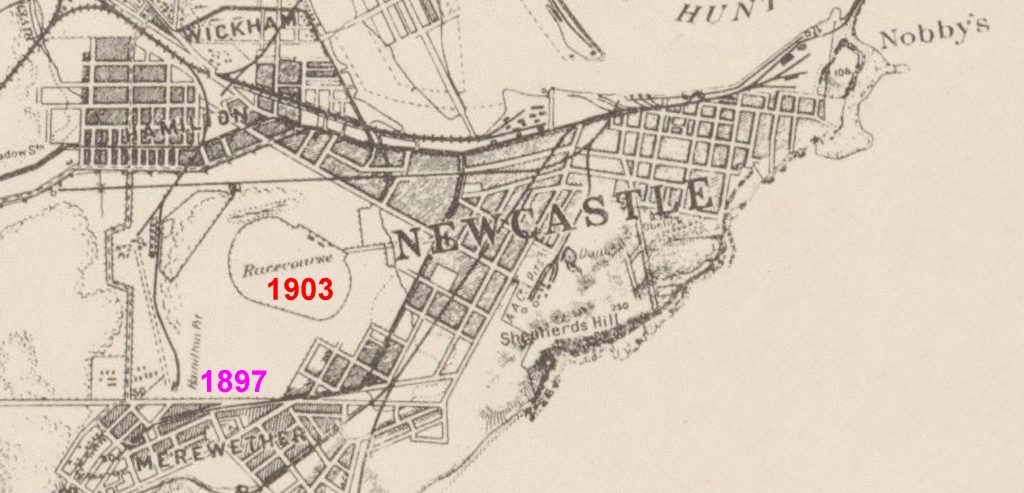
Blackburns Oval/Ground
The Lost Football Ground Newcastle website has a good summary of Blackburn’s Oval/Ground. Edward Blackburn became the licensee of the Merewether Hotel in August 1893, and continued until September 1907 when his licence was cancelled after receiving three convictions in three years. The first mention I can find in Trove to Blackburn’s Oval/Ground is 4 Apr 1900, and the last mention on 10 September 1923.
Overlaying old Water Board maps into Google Earth, we can see that the Hamilton Pit slack (spoils) heap from which Snowball’s photo was taken, was located in the vicinity of where Thomas St is today. Thus the army encampment was in the area where the Pacific Highway passes through today.
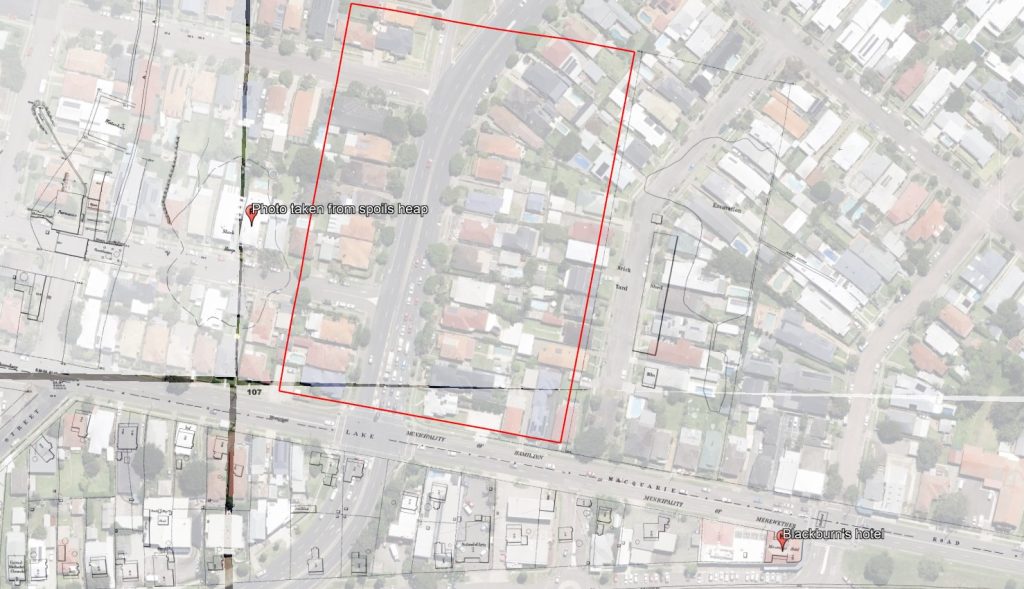
Note that reports of the army encampment of 1897 variously describe it as being in Hamilton or Merewether. Edward Blackburn’s hotel was located on Glebe Rd on the northern edge of the Merewether municipality. Thus across the road, the sporting ground known as Blackburn’s Oval was located in the Hamilton municipality.
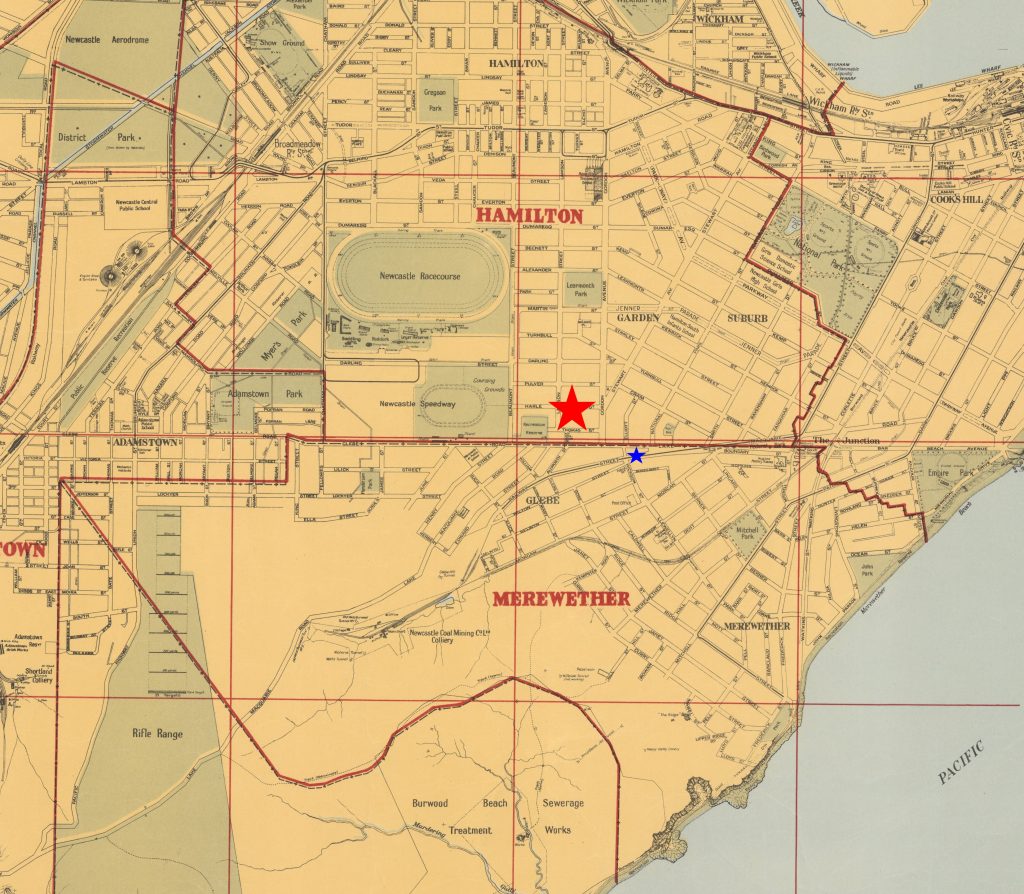
Appendix – Date of the Snowball photograph
The Ralph Snowball photograph of the army encampment from the Living Histories site used in this article, originally had a date of 23 May 1899. After researching for this the article I am certain that the correct date is 23 May 1897, for the following reasons.
- Searching Trove for information about army encampments in May 1899 reveals no results.
- Searching Trove for information about army encampments in May 1897 reveals lots of articles, with details that align with the photograph – its location next to the spoil heap of the Hamilton Pit, the number of tents, the presence of infantry and cavalry.
- The listing for Box 137 of Snowball’s glass plates that commences on 22 May 1897, shows four photographs taken of “Encampment, Merewether”.
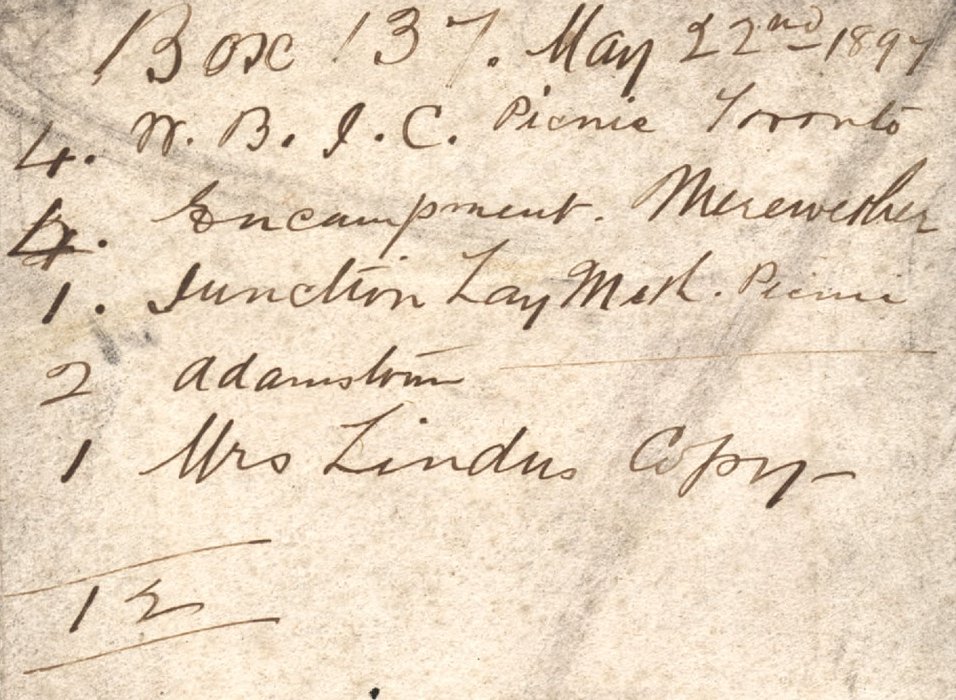
I have subsequently corrected the date in the Living Histories site.
Newspaper articles
| Article Date Event Date | Notes |
|---|---|
| 28 Apr 1894 26 Apr 1894 | "On Thursday 38 men were inspected by Warrant-officer Thompson and passed into the ranks of the Singleton Half-Squadron of Lancers, which is now, therefore, duly formed." |
| 4 May 1897 | "A communication was read from the officer commanding the 4th Infantry Regiment, asking in the event of an encampment for between 500 and 600 men being held at Merewether, on the 22nd to the 25th instant, if arrangements could be made for supplying water at a spot indicated on a plan which accompanied the letter. Under the circumstances it was decided to grant a free supply of water, and also lend a meter to check the consumption; but all the required pipes and connections would have to be supplied by the military authorities, and the work carried out at their expense by a licensed plumber." |
| 11 May 1897 | "The military encampment to be held in Newcastle this month is being looked forward to with considerable interest." |
| 18 May 1897 | "Captain Hilliard, the military staff officer for Newcastle, having completed the surveying in connection with the encampment for the No. 3 Squadron New South Wales Lancers and the 4th Infantry Regiment, to be held at Merewether on 22nd, 24th, and 26th inst., Captain Luscombe yesterday had a fatigue party at work putting up the tents. It is expected that the whole of the arrangements will be completed by to-morrow evening." |
| 19 May 1897 | "In view of the contemplated encampment of the volunteer forces of the northern district, to be held during this and part of next week, the scene of operations, adjoining the A.A. Co.'s Hamilton pit, has undergone a complete transformation. Upwards of 60 tents have been erected, giving the place a very picturesque appearance." |
| 22 May 1897 21 May 1897 | "The officers and troops from Morpeth West Maitland, and East Maitland who are to take part in the military encampment arrived at Honeysuckle Point station by special train at 8.37 last evening, and marched off at once to Merewether to camp under canvas for the night, with the elements anything but favourable to camping out." |
| 22 May 1897 21 May 1897 | "The military encampment at Merewether commenced last night, and despite the unpropitious state of the weather it was expected that 550 men of all ranks would be under canvas. These consist of the A B D E and H Companies, who will be reinforced by two guns from A Battery Field Artillery, who will arrive here by special train today from Sydney. The Maitland and Singleton Lancers will arrive by train to-day to take part in the proceedings." |
| 24 May 1897 | "The four days' military encampment at Merewether commenced on Friday night under most unfavourable weather auspices, a strong southerly gale, with pouring rain, rendering the condition of the men under canvas far from pleasant." |
| 24 May 1897 | "The military encampment at Merewether attracted a large number of visitors yesterday. The particularly fine specimens of horseflesh to be seen in the Lancers' lines excited considerable admiration among the visitors.” At Fort Scratchley and Shepherd's Hill "there will be shot practice by the No. 6 Company at a target to be moored at sea. Residents in the neighbourhood are reminded to open their windows, to avoid them being broken by the force of the concussion." |
| 25 May 1897 24 May 1897 | Detailed description of the sham fight and mock battles undertaken by the encamped soldiers. |
| 25 May 1897 24 May 1897 | "Those who considered that a military encampment would have no attraction for the general public must, after yesterday's experience, admit that they are very bad judges of the public taste. From an early hour in the morning, crowds began to gather at the Merewether camp, comprising men, women, and children of all ages and sizes, and, as the day wore on the numbers increased rapidly. After 2 o'clock, when the grand attack was commenced in the direction, of Hamilton, the Glebe Hill and the slack heap of the old Hamilton pit were literally black with people. There could not have been less than 7000 spectators, and though few, if any, really knew what was going on to cause the troops to be rushing to and fro and the cavalry to be galloping around the outskirts of the attack formations." "The air at one time was thick with smoke, and still the reports of the big guns reverberated." |
| 26 May 1897 25 May 1897 | "The encampment at Merewether was broken up yesterday afternoon, the whole of the troops, headed by the 4th Regiment Band, marching out shortly after half-past 4 o'clock, fairly tired out after their few days' continuous training."< /br> "There would, however, need to be better commissariat arrangements. The rations allowed to the men during this camp have been insufficient … The meals, though wholesome, were of a common-place description, and those who required drinks - other than tea and water - had to pay for them. On the whole the camp was run with more than a due regard to economy, and it would not be out of place if an effort were made before next year to stretch the Government purse strings in this matter." |
| 26 May 1897 | "The troops who have just come out of the encampment hope that arrangements will be made by which they shall get more liberal rations when they next go under canvas." |
| 27 May 1897 26 May 1897 | "All the paraphernalia used in connection with the late encampment was brought into the city yesterday and stored in the drill hall of the military buildings in Hunter street." |
| 4 Sep 1914 | Last reported army encampment in the inner Newcastle suburbs. |
| 4 Nov 1915 | "An immediate, and strong protest should be made against the determination of the military authorities to abolish the Newcastle encampment, and to centre the large number of recruits from Newcastle and the northern district in Sydney." |

